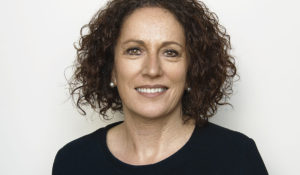Australia urged to increase refugee intake
Australia should and could triple its humanitarian refugee intake to 42,000 people a year, according to charity Oxfam.
The NGO says that with an unprecedented global demand for resettlement places, Australia should triple its annual humanitarian intake within five years, including bringing all of those held in detention on Manus and Nauru to Australia.

Oxfam Australia chief executive, Dr Helen Szoke.
Oxfam Australia chief executive, Dr Helen Szoke, said Australia was the 12th richest nation on earth but hosted a “shameful” 0.2 per cent of the world’s refugees.
A recent global report by UK-based Oxfam claimed the US, China, Japan, Germany, France and the UK – countries that represent well over half the global economy – now host just 2.1 million refugees, or less than 9 per cent of the world’s total.
By contrast, the vast majority of the world’s refugees – about 86 per cent – are hosted by developing nations, usually ones close to the countries they have left.
Turkey now hosts more than 2.5 million refugees. In Lebanon – which hosts 1.1 million – one in five of the population are refugees.
“Australia has the capacity to take in more refugees and as one of the world’s wealthy countries must do its share to address the global migration crisis,” Ms Szoke said.
“Based on Australia’s economy, population and the increasing wave of people seeking refuge across the globe, Australia can and must commit to increasing Australia’s humanitarian intake from 13,750 this year to 42,000 by 2020-21,” she said.
Oxfam proposed increasing Australia’s humanitarian intake to 20,000 this year, with further increases each year to 25,000, 30,000, 36,000 and 42,000.
Australia’s humanitarian intake will rise to 18,750 by 2018-19. The federal government has also agreed to accept 12,000 extra refugees who have fled conflict in Syria and Iraq but has not specified a time period.
Labor has proposed lifting the annual humanitarian intake to 27,000 by 2015 and The Greens have proposed an intake of 50,000.
The office of the UN high commissioner for refugees (UNHCR) says the number of people forcibly displaced from their homes worldwide by violence and war, ethnic or religious persecution, natural disaster or famine, is now 65 million – higher than at any time in modern history.
In 2012, the Gillard government raised Australia’s humanitarian intake to 20,000. Malcolm Fraser’s Coalition government accepted 22,500 refugees in 1980-81.
Szoke said Oxfam’s global report also found six countries hosting half the world’s refugees and asylum seekers – Turkey, Pakistan, Lebanon, Jordan, Palestine, and South Africa – produce just 1.9 per cent of global GDP.
“Australian humanitarian funding to assist countries such as Jordan and Lebanon, which are hosting big refugee populations and are stretched beyond their limits, must also be boosted,” Ms Szoke said.
Australia is the third-highest acceptor of resettled refugees under the UNHCR’s global resettlement program. But this represents less than 1 per cent of the world’s displaced population.
Australia’s total annual migrant intake is now about 190,000 a year.
Laurie Nowell
AMES Australia Senior Journalist












